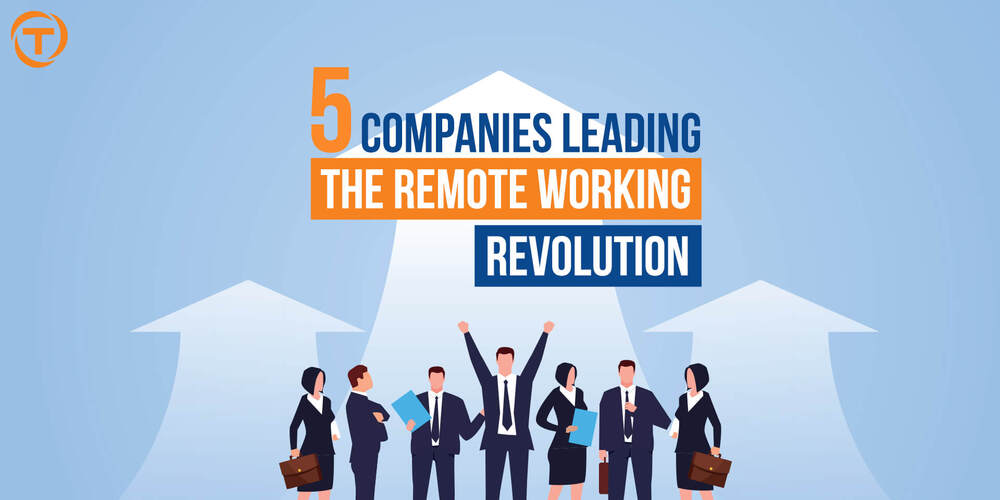Imagine being told by your CEO to work from home for the next year, at least? For many, the possibility of not returning to their previous space is a reality for many businesses who have embraced the work-from-home revolution in full swing. It is now estimated that “twenty-five to thirty percent of the workforce will be working-from-home multiple days a week by the end of 2021" [i] According to Kate Lister president of Global Workplace Analytics.
The top industries advocating work-from-anywhere options tend to be in medical/health, computer/IT, customer service, education and training, sales, accounting and finance. There has also been substantial growth in the variety of industries and job titles that are increasingly being employed remotely.
Employees appreciate the added flexibility and reduced commuter hours. Employers benefit from lower overheads and higher productivity as a result. However, there are some potential pitfalls looming. According to a 2020 survey from LinkedIn, the main challenges identified with employees working remotely was team bonding, collaboration and work oversight.
We took a look at five companies who are leading the remote working revolution and their secrets for success.
AGL Energy
Today, more than 4000 AGL team members are working remotely, including the corporate office and customer service teams which has been made possible with the enablement of digital technology starting three years earlier. Enterprise resource systems were upgraded and simplified and business processes re-engineered. A new customer experience program changed the way that customers interact with AGL via new apps, self-service meters and energy insights.
With employees working remotely, using collaboration tools like Microsoft Teams is part of the DNA as are virtual catch-ups, coffees and celebrations. AGL also holds regular web chats and live events with their teams to build engagement and connections, share updates and provide the opportunity for people to ask questions and share feedback in real-time.
It is no surprise that AGL features in the top companies in Australia. Not only does AGL advocate remote working but also additional flexibility which includes different start and finish times, a condensed working week and job sharing.
According to Amanda Lee, General Manager People & Culture Enterprise Solutions “What we do, and how we do it, ultimately comes down to the people who work at AGL and if our people are our greatest asset – it's essential that we invest in making AGL a great place to work. This way, we can keep working hard to meet the needs of our customers and the community.”
Appen
Machine learning company Appen is based out of Chatswood NSW Australia, employs 400 full-time employees with flexible work options spread out across seven countries, and over one million global contractors who are 100% remote.
“Flexibility is a key part of our culture and contributes to effectively operating a growing global business, attracting talent, and meeting the needs of our clients,” says Kerri Reynolds SVP, Human Resources and Crowdsourcing at Appen.
Appen recently took out the number one spot in the Top 100 Remote Workplaces globally, but it wasn't always this way. An internal survey of the team revealed that while they liked the flexibility, it could sometimes leave them feeling isolated.
To combat some of these feelings, the company made a conscious effort to focus on creating a more connected and collaborative culture - which included the use of apps and investment in tools like video conferencing, instant messaging and document collaboration solutions. They also built an internal community forum where employees can do everything from troubleshooting common problems to general conversation designed to get to know one another. The results were dramatic, seeing Appen's attrition rate drop by 5% with 80% of their workforce, citing they are highly satisfied with their jobs.
Shopify
For some technology companies, remote working seems like a no-brainer. A Canadian success story, Shopify is one of the largest e-commerce providers in the world with over 5000 employees across 17 worldwide offices. As part of their digital-first mindset, they made the decision that offices will be limited to 20 – 25% capacity post the COVID pandemic.
CEO and founder Tobi Lutke states "We haven't figured this whole thing out. There is a lot of change ahead, but that is what we're good at. 'Thrive on change' is written on our (now digital) walls for a reason."
While Shopify may not have figured it all out yet, they certainly have strong foundations on which to build.
First of all, they wanted employees to have their ideal physical space to work, so they offered their team members a subsidy to get what they needed to be comfortable and productive in their home environments.
To foster collaboration, Shopify encourages daily rituals with teammates like a 15-minute virtual team hangout in the morning. They use technology solutions like Slack for day to day discussions, ideas, inspiration, updates and fun.
Meeting fatigue is just as real as when it happens face-to-face, so Shopify team members are encouraged to maintain control of their calendars, end meetings 5 – 10 minutes before the next one to give time for a break and to set healthy work like boundaries. According to Lutke, “for creative work, you can’t cheat. My belief is that there are five creative hours in everyone's day. All I ask of those at Shopify is for 4 of those to be channelled into the company."
Shopify has also deployed internal coaches who create podcasts, videos and worksheets on important topics, including how to manage strong emotions like feeling overwhelmed when working remotely.
The focus on creating an incredible company culture extends to Shopify’s hiring practices. They have a multi-step intense hiring process as they want new hires to strengthen the company culture, not dilute it. It is believed that their remote working option will further create the opportunity to attract talented individuals from all around the world - that otherwise couldn’t because of geographical location.
Sodexo
While it may seem more natural for digital companies like Shopify to rate highly in the remote working stakes, remote working is finding its way into broader industries who wish to harness the benefits.
Leading global hospitality catering and facilities management company Sodexo has been featured in the Top 100 remote workplaces for five years running. To support the varying needs of its global workforce, Sodexo has been on a decade long journey to optimise flexible work for their 400,000 employees.
Sodexo firmly believes that workplace flexibility increases engagement, loyalty and ultimately better service to their clients and customers. As a result, Sodexo offers different tiers of flexibility for employees. If approved, employees can choose from job sharing, remote work, telecommuting, flex time, which adjusts the start or end of a workday, or part-time work. Employees can request changes in their schedule, location, or the way work gets done, so long as it doesn't interfere with the business.
Sodexo has a strong focus on employee health and wellbeing which they also consider when it comes to remote working. Sodexo has deployed wearables that track body movement in remote workers whose jobs are physically demanding to help provide solutions to minimise injury. When it comes to mental health, Sodexo has implemented several initiatives focused on overall mental wellbeing and resilience building to reduce stigma, encourage help-seeking, early intervention, and ultimately drive positive cultural and behavioural change throughout the company.
Suffolk Construction
When we think of remote working, construction is not usually the first industry that comes to mind; however, it is catching up fast. During COVID 19, engineers, architects, technologists, estimators and project management personnel were forced to work remotely and, in many cases, have done so very successfully.
One such company, Suffolk Construction was already leading the charge when it came to remote working in the construction industry. They had invested in internal knowledge documentation, communication tools and real-time project management solutions before the COVID outbreak, making it easier to adapt to remote working.
Suffolk uses AI tools that visually track construction projects. Builders strap a small camera to their hard hat which is then uploaded, organised and mapped to project plans. Aside from keeping historical records, the technology allows remote stakeholders to check on projects through virtual site tours and enable managers to track multiple projects without being on-site.
Augmented reality and virtual reality are already changing the way construction is delivering. New cloud collaboration tools are emerging, which enable remote and virtual collaboration specifically in construction to increase the attraction and retention of talent regardless of geography.
Trojan Recruitment Group’s Top 5 Insights
Mastering remote working takes time. Successful companies have been implementing plans for several years.
While technology is essential, it should be considered an enabler for people to do their best work, not replace human interaction.
Feeling connected is a key factor in mental wellbeing, so if you would like your employees to perform at their best, then genuine effort made in the human aspect of work will pay dividends culture-wise.
Meeting fatigue is a real phenomenon, and the intensity of video calls can be mentally taxing. Placing breaks between meetings will increase performance.
Consider how rewards and recognition may need to evolve. It is no longer easy to shout a team member coffee or lunch.
If you're serious about building a team of productive, engaged employees, working virtually or on-site, contact a recruitment agency like Trojan Recruitment Group and get advice from the experts in labour-hire, labour solutions, temp recruitment and contract staff.
[i] https://globalworkplaceanalytics.com/work-at-home-after-covid-19-our-forecast
https://www.afr.com/companies/why-appen-is-only-now-becoming-a-tech-company-20190114-h1a26a
https://home.kpmg/xx/en/home/insights/2019/04/case-study-suffolk-construction.html
https://www.strxur.com/erin-khan-remote-work-suffolk-au/
https://www.planradar.com/remote-work-construction-management/
https://www.shopify.com/careers/culture’
https://www.shopify.com.au/partners/blog/remote-work
https://constructionblog.autodesk.com/remote-work-in-construction/


